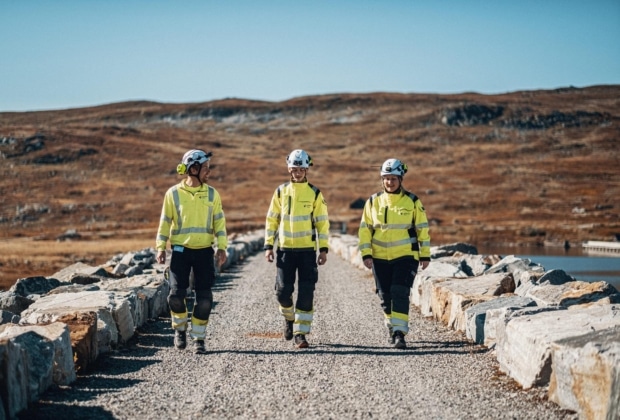Strategy 2035
Hafslund's significant sustainability areas
We at Hafslund work for a world in balance and to get there the challenges are lined up. The Group's strategy is based on five strategic focus areas with challenges we must solve and milestones we must reach by 2035. The Group must become climate and nature positive, contribute with strong renewable growth, balance the energy system of the future and contribute to creating greener and smarter cities. In addition, Hafslund must have the best minds - without this, the group will not be successful with any of the other ventures.
Climate and nature positive →

Strong growth in renewable energy →

Balance for the energy system of the future →

Smart and green urban development →

Good minds are the key →

Our strategy towards 2035
In 2022, a new and larger Group looked further ahead in its strategy work. Our objective was to establish a long-term strategy that sets the direction for Hafslund towards 2035. With long licensing and development processes and exponential changes within electrification and green transition, it is absolutely essential for Hafslund to look far ahead when planning new growth initiatives and to work on strategy with a 10-15 year perspective.
It is our view that the starting point for the strategy work has to be the future and what we believe the world will look like in 2030 and 2035. Hafslund’s strategy is therefore based on an external analysis of important trends for the future in which the Group will operate. We then turn our gaze back on ourselves and consider how we can best face this future – what we want to focus on and what we need to do to succeed.
Hafslund’s focus areas and goals for sustainability are fully integrated with the Group strategy, and a materiality analysis that assesses the Group’s impact on people and the environment, ESG risks and opportunities is a vital part of defining where we stand today and how we wish to develop.

External analysis
We have studied a number of trends in order to understand the reality that Hafslund will have to deal with in the future. Some of the trends take a macro perspective, such as the development of climate and nature challenges for the planet and the development of new technologies, while others are linked to our closer surroundings, such as the consideration of our owner the City of Oslo and what is important for consumers and employees in Norway.

Materiality analysis sustainability
In 2022 Hafslund conducted a double materiality analysis based on the principles set out in the forthcoming EU Corporate Sustainability Reporting Directive (CSRD). The analysis provides an in-depth understanding of the Group’s impact on people and the environment, and the sustainability risks and opportunities that exist for Hafslund.
A double materiality analysis includes two sub-analyses; an impact analysis and a stakeholder and megatrend analysis. The impact analysis reveals how Hafslund’s business activities impact people, society and the environment. The stakeholder and megatrend analysis includes a description of key stakeholders and the expectations and requirements they set for the Group, as well as an assessment of megatrends. Megatrends are strong transformative forces that will influence how Hafslund works with sustainability in the future. The insights obtained from the analyses formed the basis for deciding on and establishing important topics, risks and opportunities within sustainability.
Based on the double materiality analysis, Hafslund has determined important topics that form the basis for corporate sustainability management, and goals, measures, action plans and KPIs have been defined for each topic. These topics are presented under the strategic focus areas.
Climate and nature positive
As one of the largest producers of renewable energy and district heating in the Nordic region, Hafslund has a responsibility for making a positive contribution to both the climate and nature. Both renewable energy and biodiversity are critical for future life on our planet.
Read more